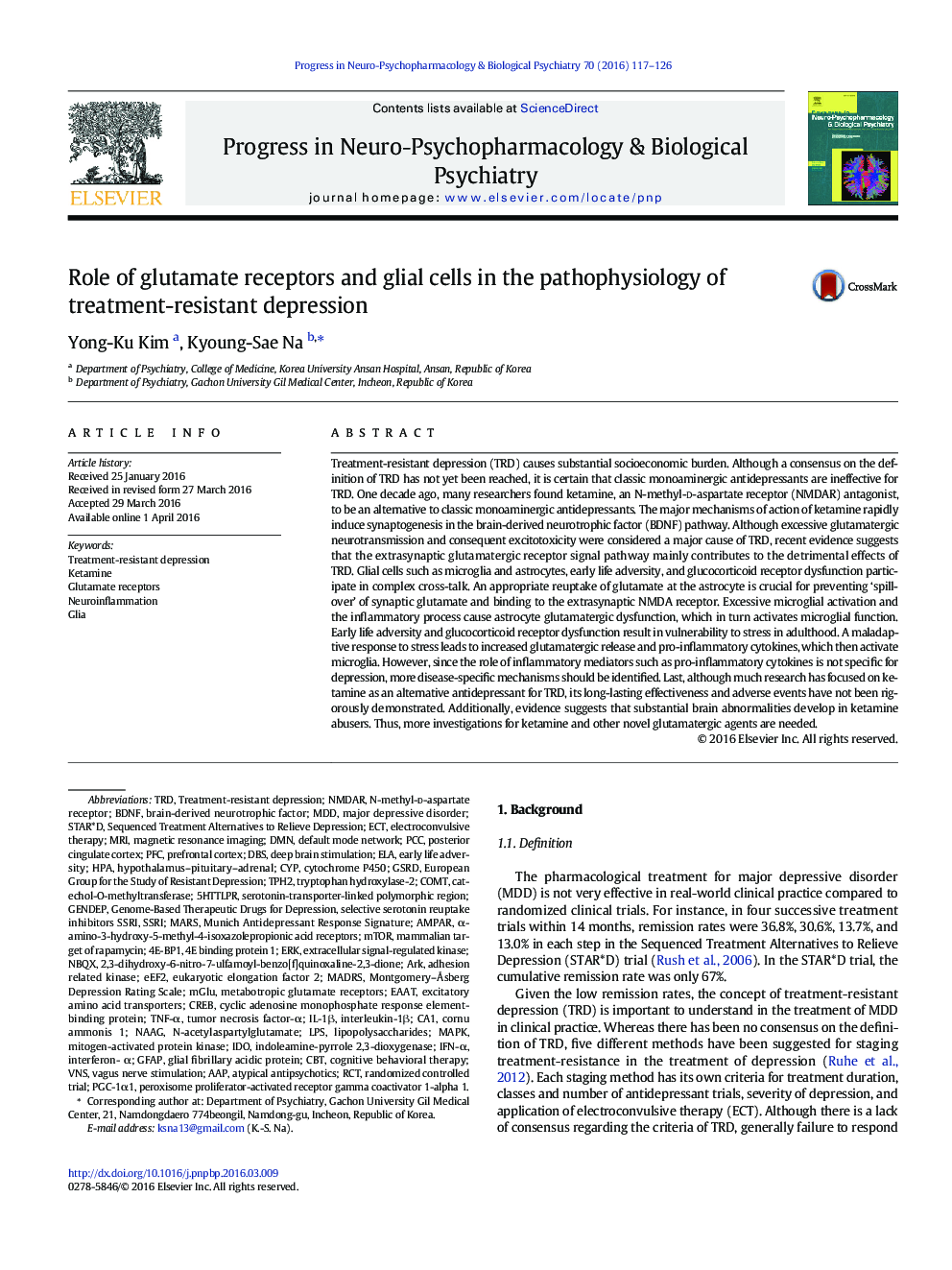| Article ID | Journal | Published Year | Pages | File Type |
|---|---|---|---|---|
| 2564668 | Progress in Neuro-Psychopharmacology and Biological Psychiatry | 2016 | 10 Pages |
•Classic monoaminergic antidepressants are ineffective for treatment-resistant depression (TRD).•Excessive glutamatergic neurotransmission and consequent excitotoxicity are considered a major cause of TRD.•Glutamatergic neurotransmission via brain-derived neurotrophic factor (BDNF) is the main mechanism of action of ketamine.•Glial cells play an important role in glutamate reuptake and synaptic neurotransmission.
Treatment-resistant depression (TRD) causes substantial socioeconomic burden. Although a consensus on the definition of TRD has not yet been reached, it is certain that classic monoaminergic antidepressants are ineffective for TRD. One decade ago, many researchers found ketamine, an N-methyl-d-aspartate receptor (NMDAR) antagonist, to be an alternative to classic monoaminergic antidepressants. The major mechanisms of action of ketamine rapidly induce synaptogenesis in the brain-derived neurotrophic factor (BDNF) pathway. Although excessive glutamatergic neurotransmission and consequent excitotoxicity were considered a major cause of TRD, recent evidence suggests that the extrasynaptic glutamatergic receptor signal pathway mainly contributes to the detrimental effects of TRD. Glial cells such as microglia and astrocytes, early life adversity, and glucocorticoid receptor dysfunction participate in complex cross-talk. An appropriate reuptake of glutamate at the astrocyte is crucial for preventing ‘spill-over’ of synaptic glutamate and binding to the extrasynaptic NMDA receptor. Excessive microglial activation and the inflammatory process cause astrocyte glutamatergic dysfunction, which in turn activates microglial function. Early life adversity and glucocorticoid receptor dysfunction result in vulnerability to stress in adulthood. A maladaptive response to stress leads to increased glutamatergic release and pro-inflammatory cytokines, which then activate microglia. However, since the role of inflammatory mediators such as pro-inflammatory cytokines is not specific for depression, more disease-specific mechanisms should be identified. Last, although much research has focused on ketamine as an alternative antidepressant for TRD, its long-lasting effectiveness and adverse events have not been rigorously demonstrated. Additionally, evidence suggests that substantial brain abnormalities develop in ketamine abusers. Thus, more investigations for ketamine and other novel glutamatergic agents are needed.
